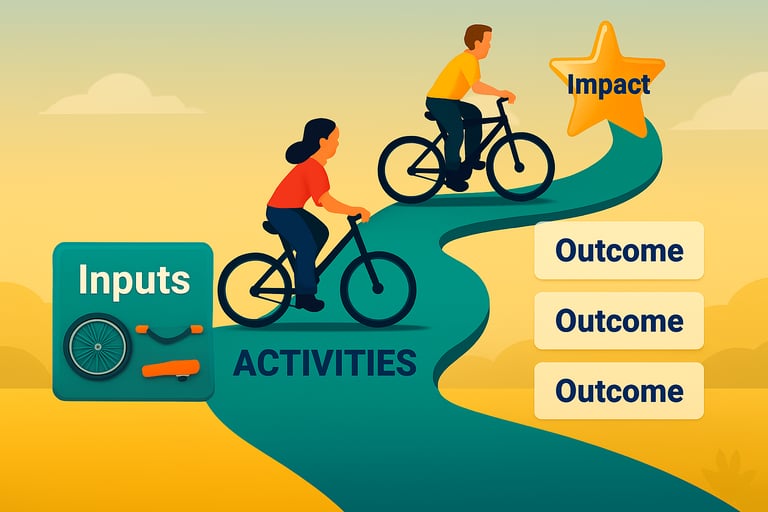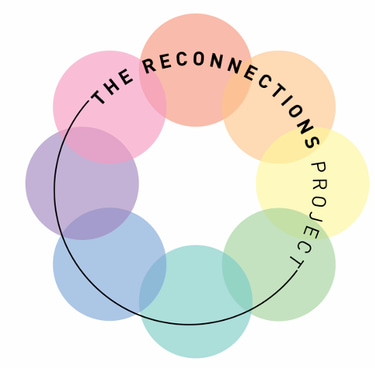Creating a Theory of Change: Free Guide
Before designing or updating your Theory of Change, review this guide and take the time to ask yourself the hard questions. You should refer back to the guide when you are ready to start workshopping your Theory of Change. Make sure to double-check that you haven’t fallen into our ten common pitfalls! If you come across any terms you aren’t sure about, there’s also a glossary at the end.
RESOURCESIMPACTEFFECTIVE CAMPAIGNS
Dr Trent Grassian
7/29/20253 min read


A Theory of Change (ToC) is a way of mapping out the work you are doing, creating direct links from your long-term goal to the steps needed to achieve it. A ToC starts with inputs and interventions, connecting them to specific outputs and indicators, which then link to overall impact. A well-designed ToC should clearly demonstrate how your work will lead to the impact you want to have, including being clear about any underlying assumptions, potential risks, and how you will integrate monitoring, evaluation, and learning (MEL) into each phase.
Common Pitfalls
I have supported dozens of organisations with their ToCs. These are the ten most common issues I have seen:
Building a ToC based on what you are already doing, or treating it like a tick box exercise.
Lack of clarity around impact goals, deadlines, and/or expected scale.
Not considering external factors, including changes in policy, market forces, cultural norms, or other organisations’ efforts.
Including too many – or too few – outcomes.
Forgetting about inputs and just assuming you will have everything you need.
Being too linear in your logic, ignoring feedback loops, unintended consequences, and system complexity.
Making big leaps or relying on (hidden) assumptions.
Not considering monitoring, evaluation, and learning (MEL).
Forgetting about power dynamics and equity issues.
Not regularly updating your ToC based on external conditions and internal learning.
Trent's Top Ten Tips for a useful theory of change
Work backwards: Envision your ideal equitable system, then reverse-engineer the steps to reach it, unbound by today’s constraints.
Engage stakeholders early: Speaking with key people from a range of sectors and organisations early on can help clarify your thinking and reveal your assumptions and biases.
Review the evidence and context: Develop your case in advance to save resources and ensure your ToC reflects real-world realities.
Integrate Monitoring, Evaluation, and Learning (MEL) throughout: You can’t know your real impact without MEL. Proper MEL confirms outcomes and highlights gaps in your ToC and implementation.
Consider risks and mitigation strategies: While you cannot prepare for everything, you need to consider key risks and how you will monitor and address them.
Break it down: Consider the type of outcomes you will have in the short-, medium-, and long-term, and how they link together.
Tell a story: Using a clear narrative to communicate your ToC is a great way to check for hidden assumptions. You can assess your story by applying it to made-up or real-life examples.
Make it visual: Instead of a lengthy text document, use accessible, engaging formats, like charts, storyboards, or interactive maps. You could try using a logic model, results chain, outcome map, intervention matrix, or a visual roadmap using a graphic pathway or flow diagram.
Keep it streamlined: Keep your ToC simple and clear. Summarise your long-term goal and timeline in one or two concise sentences.
Update your ToC at least once a year: Organisations that treat their ToC as a one-and-done artefact risk staying stuck in outdated assumptions. Re-evaluating your ToC on a regular–and as-needed–basis ensures you’re responsive to shifting contexts, emerging opportunities, and hard lessons learned. Updates should happen at scheduled times, when certain triggers occur (e.g., major external shocks or policy changes), and based on continuous learning loops with real-time monitoring.
Free downloadable guide
Download my free guide below and keep it handy. It includes lots of tips and a glossary of terms, to help you feel confident the next time you're thinking about creating or updating your Theory of Change!
If you need this information in a Word document format, please email me.
Get in touch if you'd like to get some support in your Theory of Change endeavours. Don't forget, I offer a FREE 45-minute consultation to anyone working for the public good.
No budget? No problem. If you're committed to making an impact, I want to help you do it better. This isn't just work—it's a mission. Let's make change happen, together.
